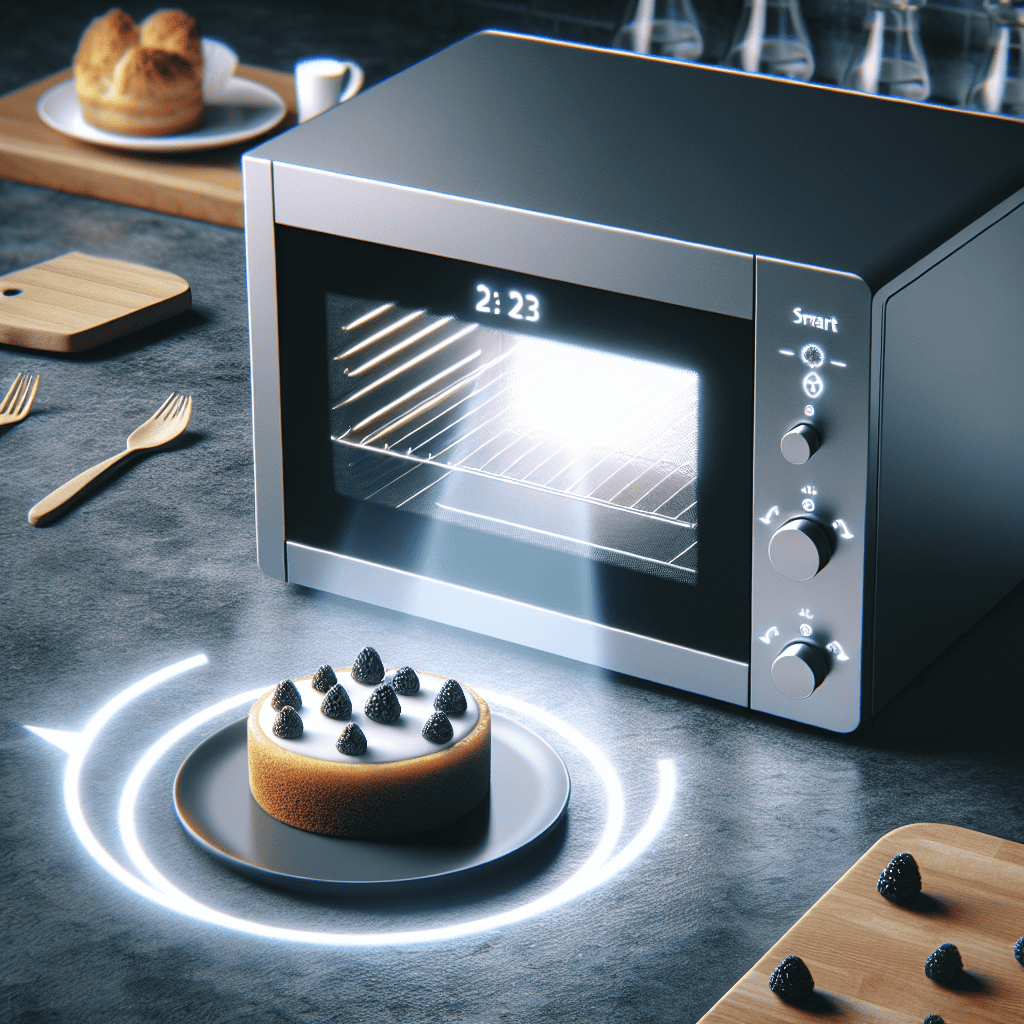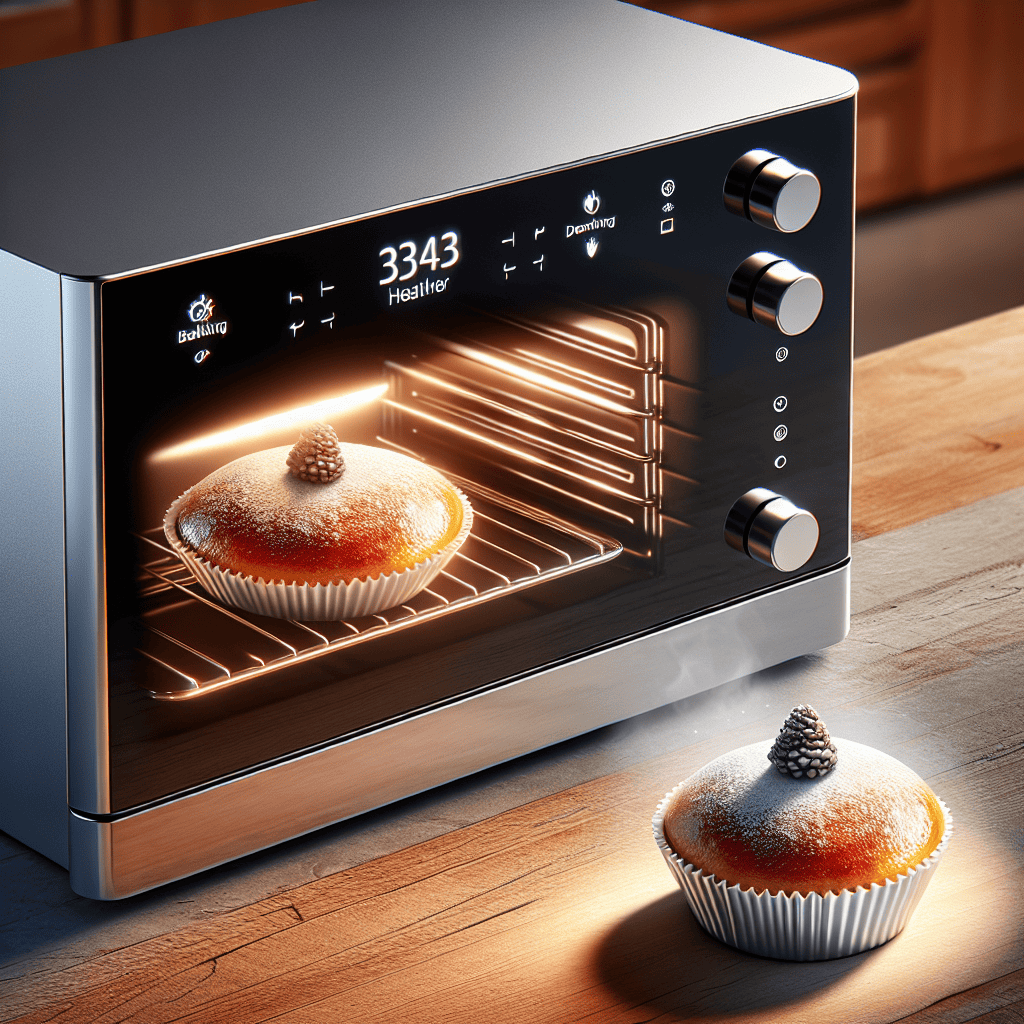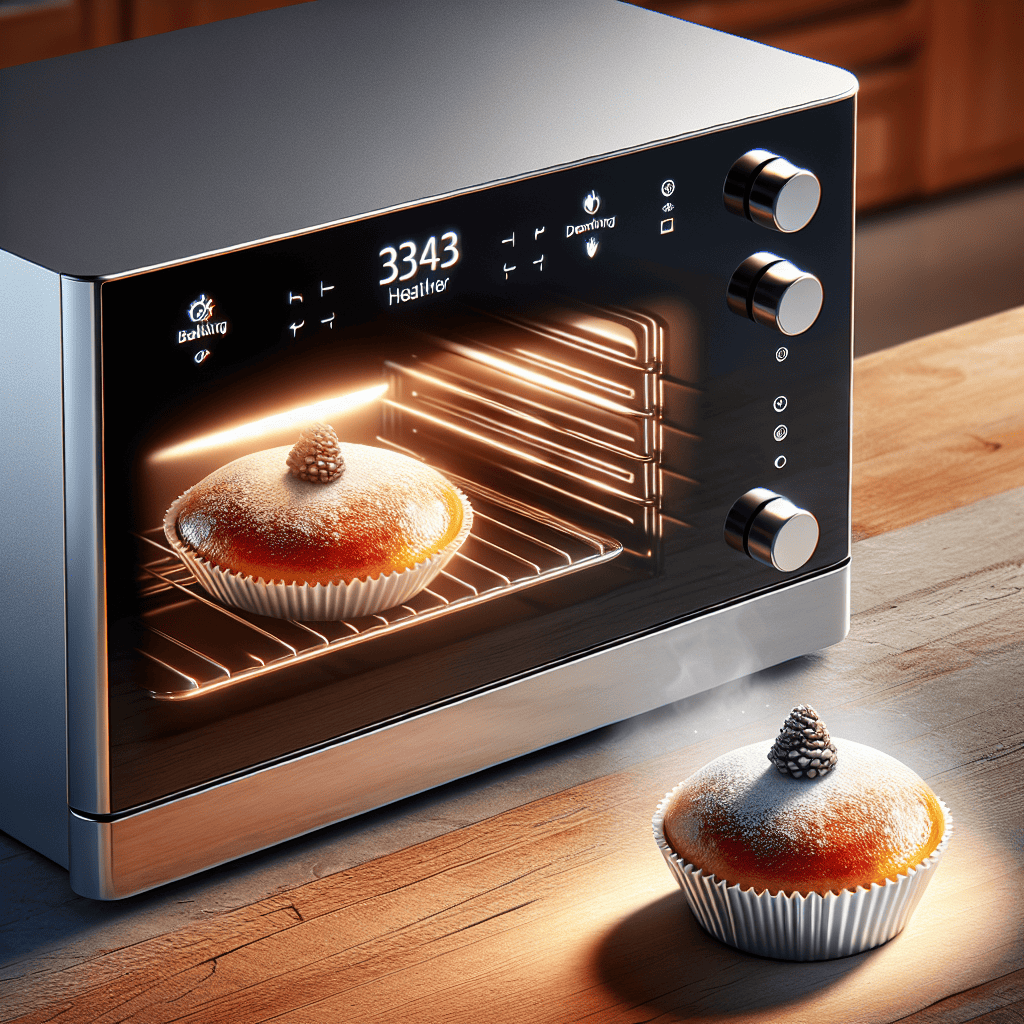You’re in for a treat with the revolution in baking that’s putting a healthy twist on your favorite sweets—welcome to the world of low-temp baking in a smart oven. Imagine sinking your teeth into a moist and fluffy cake, not just indulging in the taste but also feeling good about it being a healthier option. Thanks to brands like Breville and June, who have upped the game with their innovative smart ovens, you now have the luxury of precisely controlling the temperature to ensure every batch of cookies or pies retains more nutrients while reducing the formation of harmful compounds that often come with traditional high-temperature cooking. This method is not just a step forward for your health; it’s also a leap towards enhanced flavors and textures that’ll make your sweet tooth sing without the guilt.

Understanding Low-Temp Baking
Definition and Basics
Low-temp baking, as you might have guessed, involves baking at temperatures significantly lower than traditional methods. Typically, most recipes will suggest an oven temperature ranging from 350°F to 425°F. In contrast, low-temp baking might go as low as 200°F to 325°F. You’re not just turning down the dial on your oven; you’re recalibrating the whole baking process for a different, and some say better, outcome.
Benefits to Health and Nutrition
There are quite a few advantages to low-temp baking that go beyond just saving energy. For one, cooking at lower temperatures minimizes the creation of harmful compounds, like acrylamide, that can form when certain foods are cooked at high heat. Moreover, because the heat is less intense, there’s less risk of charring or burning your food, both of which not only ruin the flavor but also could potentially add carcinogens to your diet.
Comparing Traditional Baking Temperatures
At traditional baking temperatures, you’re looking at a quick and robust reaction that can give bread a good rise and meats a browned crust. However, the high heat can also deplete moisture rapidly, leading to drier outcomes, and in some cases, it can reduce the nutritional content of certain foods. By lowering the temperature, you’re playing the long game, where foods retain more of their original taste, nutrients, and overall quality.
The Science of Baking at Lower Temperatures
Chemical Reactions at Reduced Heat
When you bake at a lower temperature, the Maillard reaction – that wonderful chemical reaction that browns and flavors the meat and bread – still occurs but at a slower pace. This means flavors have more time to develop, and you won’t get that rapid crust formation that often happens on the outside before the inside is fully cooked.
Texture and Consistency Changes
Reduction in heat also affects texture and consistency. For instance, proteins, such as gluten in baked goods, develop slower, which can result in a more tender product. Cakes can become more moist, and meats can be more succulent because of the gentle cooking process.
Preservation of Sensitive Nutrients
Vital nutrients, especially some vitamins and phytochemicals, are sensitive to heat. Vitamin C is a classic example. Lowering your baking temperature can help preserve more of these sensitive nutrients, giving you not only a tasty dish but also a more beneficial one in terms of health.
Smart Ovens and Their Role in Low-Temp Baking
Introduction to Smart Oven Technology
Smart ovens are pretty much a game-changer in your kitchen. They’re tech-savvy, capable of connecting to the internet, and can be controlled remotely through apps. Some even have internal cameras and AI to recognize the food you’re cooking.
Precision Temperature Controls
One of the standout features of these ovens is precision temperature control. Unlike conventional ovens, which can have significant temperature swings, smart ovens can maintain a precise temperature. This is crucial for low-temp baking, where even a small variance can affect the final product.
Features That Facilitate Healthier Baking
Besides temperature precision, smart ovens often come with features like steam baking, which helps retain moisture and nutrients. They also have more consistent heat distribution, which means even cooking and the elimination of hot spots that can cause burning.
Healthier Dessert Ingredients
Choosing the Right Sugar Alternatives
When you’re baking at a low temperature, making healthier desserts doesn’t stop at the oven dial. You should also consider sugar alternatives like honey, maple syrup, or even puréed fruits. These typically have a lower glycemic index and can add nuanced flavors to your desserts.
Whole Grains and Fiber-rich Flour Options
Ditch the all-purpose flour for whole grain or other fiber-rich flour options. These add a complexity of flavor and texture as well as boost the nutritional profile of your desserts with extra vitamins, minerals, and fibers.
Incorporating Fruits and Vegetables
Pureed fruits and finely grated vegetables are not just for sneakily boosting your nutrient intake; they also add natural sweetness and moisture to your baked goods. That means less added sugar and fat without compromising on taste or texture.

Recipe Adaptations for Low-Temperature Baking
Modifying Traditional Baking Recipes
To adapt traditional recipes to low-temp baking, some tweaking is required. You’ll need to adjust quantities of ingredients like raising agents and play around with the ratios to account for the reduced evaporation at lower temperatures.
Determining Appropriate Baking Times
Baking times will almost always increase when you lower the temperature. This isn’t a precise science, so as a rule of thumb, if you’re reducing the baking temperature by 25°F, consider increasing the baking time by about 25 percent. But always keep a close eye on your dessert to prevent overbaking.
Trial and Error: Tweaking Recipes for Best Results
Perfecting your low-temp baked goods will likely involve some trial and error. It’s essential to take notes on what works and what doesn’t, including adjustments to temperature, time, and ingredient ratios. Over time, you’ll develop a finely tuned sense of what each specific recipe requires.
Notable Smart Oven Brands and Models
June Oven: Features and Low-Temp Capabilities
The June Oven is a multi-functional smart appliance that can bake, roast, air fry, and more. Its ability to maintain consistent low temperatures makes it excellent for low-temp baking, and the built-in camera and food recognition software add to its appeal.
Breville Smart Oven Air: Precision and Performance
The Breville Smart Oven Air boasts precise temperature control and convection capabilities, making it ideal for evenly cooked low-temp desserts. Its versatility means you can approach a wide variety of recipes with confidence.
Cuisinart Convection Toaster Oven: Versatility and Reliability
Not to be outdone, the Cuisinart Convection Toaster Oven offers reliable performance and a wide temperature range, which is perfect for low-temp baking fans who want the confidences of convection cooking.
The Merits of Slow Baking Desserts
Enhanced Flavor Development
Slow baking allows flavors to develop and meld gradually, which can lead to more nuanced and complex taste profiles in your desserts. It’s the difference between a quick stir-fry and a slow-cooked stew – each has its place, but the depth of flavor in the latter is undeniable.
Improved Texture and Moisture Retention
Low-temp baking can give you a texture that is just not possible with high-heat methods. Moisture is locked in, and since the structure of cakes and pastries forms more slowly, the result can be more tender and less prone to drying out.
The Mindfulness and Satisfaction of Slow Baking
There’s something inherently tranquil about the process of low-temp baking; it requires patience and a sense of presence. The anticipation of waiting for a cake to gently rise and develop flavor is part of the pleasure, adding a dash of mindfulness to the mix.
Step-by-Step Guide to Low-Temperature Baking
Prepping Ingredients for a Slow Bake
Prepare your ingredients with care. Ensure all components are at the right temperature – many require room temperature ingredients for optimal integration. Pieces of fruits or vegetables should be finely processed to distribute sweetness and moisture evenly.
Setting Up the Smart Oven for Success
Preheat your smart oven – yes, even with low-temp baking, preheating is essential. Arrange the racks according to where your dish will receive the most even heat. If you’re using a steam feature, get that ready too.
Monitoring and Adjusting Baking Progress
Keep a watchful eye on your dessert. Smart ovens can be set to alert you at specific intervals, but there’s no better gauge than your own senses. Check for the typical signs of doneness, but expect it to take longer. If a dessert is browning too quickly on top, you can tent it with foil.
Common Mistakes and Misconceptions
Overcompensating with Sweeteners
A common error is adding too much sweetener to compensate for the lower temperature. Trust the process and let the slower baking draw out natural flavors.
Misjudging the Importance of Oven Preheating
Many believe that with low-temp baking, preheating isn’t necessary – but it is. It ensures a consistent environment for your dessert from the get-go.
Neglecting Humidity and Air Circulation
The atmosphere inside your oven is critical. If your oven has a convection feature, use it to promote even baking and use pans that allow for good air circulation around your dessert.
Celebrating Success: Showcasing Low-Temp Desserts
Hosting a Healthy Dessert Party
Once you’ve mastered a few recipes, why not show off a little? Host a dessert party featuring your low-temp creations. It’s a great way to introduce friends and family to the joys of healthier baking.
Utilizing Social Media to Share Creations
Take pictures of your beautiful, slow-baked desserts and share them on social media. You might inspire others to try their hand at low-temp baking, and you’ll likely get some digital applause for your efforts.
Gathering Feedback and Perfecting Recipes
Be open to feedback from every slice shared and photo posted. Use it to refine your recipes and techniques. With each batch, you’ll be one step closer to low-temp baking perfection.

